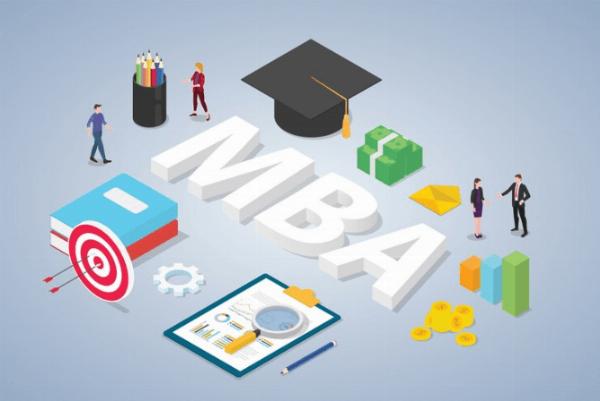 Bulk Content Creation – Scale Without Sacrificing Quality!
Bulk Content Creation – Scale Without Sacrificing Quality!
The Evolution of Natural Language Processing: New Features in 2024
Written by juliaerhart1 » Updated on: June 17th, 2025

Introduction to Natural Language Processing
Natural Language Processing (NLP) has revolutionized the way we interact with technology, enabling machines to understand and respond to human language. Imagine teaching a computer to not only hear but truly comprehend what you're saying. That's the essence of NLP, and it's evolving faster than ever. By 2024, NLP is reaching new heights with groundbreaking language features that are set to transform various industries and our daily lives.The History of NLP
Understanding the journey of NLP helps appreciate its current state and future potential. Let's take a quick trip down memory lane to see how it all began and evolved over the decades.
Early Beginnings
The story of NLP starts in the 1950s when computers were first used to process human language. These early systems were rudimentary, relying on rule-based approaches to parse and generate text. Despite their limitations, they laid the groundwork for future advancements.
The Rise of Machine Learning
The next significant leap came with the advent of machine learning. Algorithms that could learn from data brought a new level of sophistication to NLP, allowing for more accurate language models. This era saw the development of techniques that could handle more complex language tasks, marking a pivotal shift in NLP capabilities.
The Deep Learning Revolution
The 2010s ushered in the deep learning revolution. Neural networks, particularly those with multiple layers, began to outperform traditional methods by a significant margin. Deep learning enabled machines to understand and generate human-like text, setting the stage for the advanced NLP systems we have today.
Key Concepts in NLP
To appreciate the innovations of 2024, it's essential to grasp some core NLP concepts that underpin these advancements.
Syntax and Semantics
Syntax refers to the structural rules that govern the formation of sentences, while semantics deals with the meaning behind the words. Both are crucial for effective communication. Modern NLP systems analyze syntax to parse sentences and semantics to understand their meaning, enabling more natural interactions.
Machine Translation
Machine translation is one of NLP's most prominent applications. It involves converting text from one language to another, a task that has improved dramatically with the advent of neural networks. Today, machine translation systems can provide more accurate and contextually appropriate translations than ever before.
Sentiment Analysis
Sentiment analysis involves determining the emotional tone behind a piece of text. This application is widely used in industries like marketing and customer service to gauge public opinion and customer satisfaction. Advances in sentiment analysis are enabling more nuanced understandings of text, including detecting specific emotions.
Breakthroughs Leading Up to 2024
The path to the innovations of 2024 is paved with several key breakthroughs in recent years. Let's explore some of these foundational advancements.
Transformer Models
Transformer models, such as BERT and GPT, have revolutionized NLP by enabling machines to process and understand entire sentences simultaneously, rather than word by word. This parallel processing capability allows for more accurate and context-aware language models.
Pre-trained Language Models
Pre-trained language models are another game-changer. These models are trained on vast amounts of text data and then fine-tuned for specific tasks. This approach has significantly improved the performance of various NLP applications, from translation to sentiment analysis.
Contextual Understanding
Modern NLP systems are increasingly capable of understanding context, which is crucial for generating relevant and coherent responses. This advancement is particularly important for applications like chatbots and virtual assistants, which need to maintain context over multiple interactions.
New Features in NLP for 2024
As we step into 2024, several exciting new features are set to enhance NLP capabilities, making interactions with machines more natural and effective.
Improved Contextual Accuracy
One of the most significant advancements is the improved contextual accuracy of NLP models. These new models can understand and retain context better, leading to more precise and relevant responses in conversational AI and other applications.
Real-time Language Translation
Real-time language translation is becoming more seamless and accurate, breaking down communication barriers instantly. This feature is especially beneficial for global businesses and travelers, making cross-language communication smoother than ever.
Enhanced Sentiment and Emotion Detection
Beyond just detecting sentiment, the latest NLP models can now identify specific emotions such as joy, anger, and sadness. This capability provides deeper insights for businesses looking to understand customer emotions and tailor their responses accordingly.
Advanced Conversational AI
Conversational AI is taking a leap forward with more human-like interactions. These advanced systems can handle complex conversations, understand nuanced queries, and provide more natural and engaging responses, making them ideal for customer service and personal assistant applications.
Applications of NLP in Various Industries
NLP's impact spans multiple industries, driving innovation and efficiency. Let's look at how different sectors are leveraging these advancements.
Healthcare
In healthcare, NLP is transforming patient care and medical research. It helps analyze patient data, extract relevant information from medical records, and improve communication between doctors and patients. For instance, NLP can assist in diagnosing conditions based on patient symptoms described in natural language.
Customer Service
NLP is enhancing customer service by powering chatbots and virtual assistants that handle customer queries efficiently. Sentiment analysis helps companies understand customer feedback and improve their services. These applications lead to faster response times and better customer satisfaction.
Finance
The finance industry uses NLP for various purposes, including fraud detection, risk management, and automating customer interactions. NLP systems can analyze vast amounts of financial data to identify patterns and anomalies, helping institutions make informed decisions and protect against fraudulent activities.
Challenges and Ethical Considerations
Despite the impressive advancements, NLP still faces several challenges and ethical considerations that need to be addressed.
Data Privacy
Ensuring the privacy and security of user data is paramount. NLP systems often require access to sensitive information, raising concerns about how this data is stored and used. Developing robust privacy measures is essential to protect user information.
Bias in Language Models
Bias in language models is a significant issue. These models can inadvertently learn and propagate biases present in the training data, leading to unfair or discriminatory outcomes. It's crucial to identify and mitigate these biases to ensure fair and equitable AI systems.
The Future of NLP Beyond 2024
Looking beyond 2024, the future of NLP is filled with exciting possibilities. Let's explore some potential developments on the horizon.
Integration with Other Technologies
NLP is expected to integrate more deeply with other emerging technologies like the Internet of Things (IoT) and Augmented Reality (AR). This integration could lead to innovative applications that leverage the strengths of multiple technologies, providing richer and more immersive user experiences.
Potential for Human-AI Collaboration
The future of NLP also holds great promise for human-AI collaboration. As NLP systems become more advanced, they could assist humans in complex tasks, augmenting our abilities and making technology more intuitive and supportive. This collaboration could revolutionize how we work, learn, and interact with technology.
Conclusion
Natural Language Processing is at the forefront of technological innovation, and 2024 promises to be a landmark year for this field. With improvements in contextual accuracy, real-time translation, sentiment detection, and conversational AI, NLP is set to transform various industries and enhance our daily interactions with technology. As we look to the future, the potential for further advancements and integration with other technologies is immense, paving the way for even more exciting developments ahead.
FAQs
What is NLP?
NLP stands for Natural Language Processing, a field of AI focused on the interaction between computers and human language.
How has NLP evolved over the years?
NLP has evolved from simple rule-based systems to advanced deep learning models that understand context and generate human-like text.
What are the new features in NLP for 2024?
Key features include improved contextual accuracy, real-time translation, enhanced sentiment detection, and advanced conversational AI.
What industries benefit from NLP?
NLP is widely used in healthcare, customer service, finance, and many other industries for tasks like data analysis, sentiment analysis, and automation.
What are the challenges in NLP?
Challenges include data privacy, bias in language models, and ensuring ethical use of the technology.
Note: IndiBlogHub features both user-submitted and editorial content. We do not verify third-party contributions. Read our Disclaimer and Privacy Policyfor details.
Copyright © 2019-2025 IndiBlogHub.com. All rights reserved. Hosted on DigitalOcean for fast, reliable performance.
















